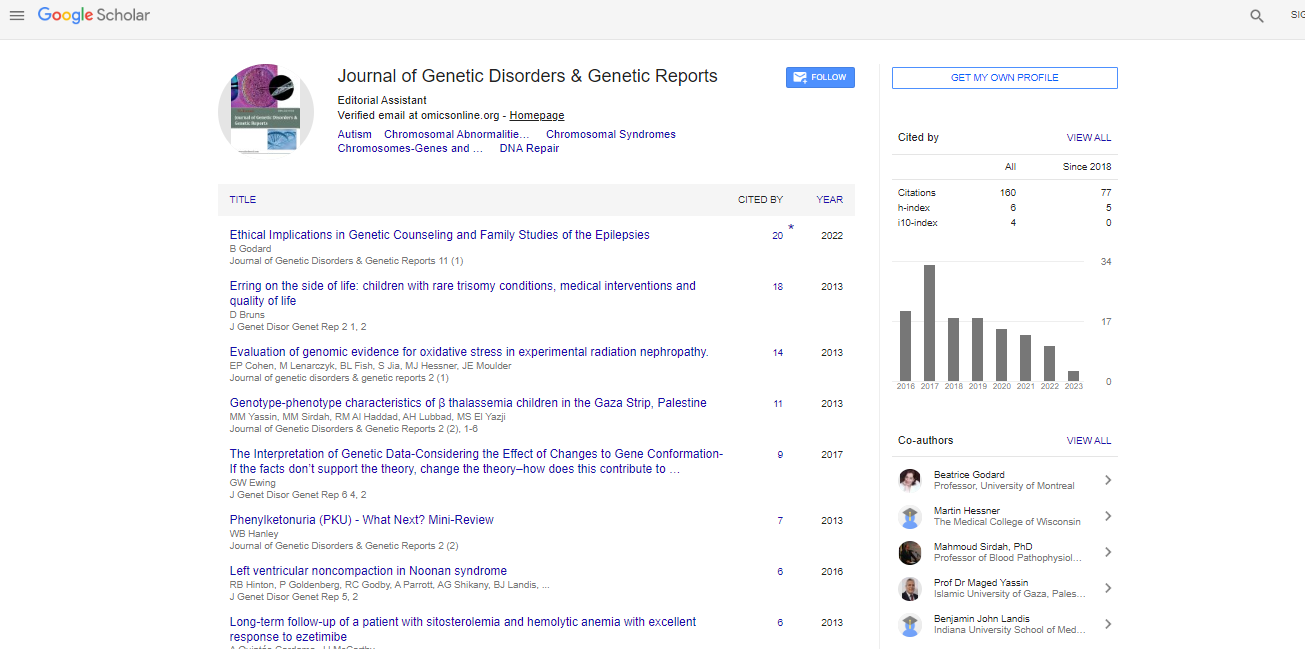Review Article, J Genet Disor Genet Rep Vol: 7 Issue: 2
Hearing in Williams Syndrome: From Input to Processing
Fagundes Silva LA1*, Kim CA2 and Matas CG1
1Department of Physical Therapy, Audiology and Speech-Language Pathology, and Occupational Therapy, Faculdade de Medicina, Universidade de Sao Paulo (School of Medicine of the University of São Paulo; FMUSP), São Paulo, SP, Brazil
2Genetics Unit, Hospital das Clinicas, Faculdade de Medicina, Universidade de Sao Paulo (Children’s Institute, University Hospital School of Medicine, University of São Paulo; HCFMUSP), São Paulo, SP, Brazil
*Corresponding Author : Fagundes Silva LA
R. Cipotânea, 51, Cidade Universitária, São Paulo (SP), CEP: 05360-160, Brazil
Tel: +(55) 11 3091-8411
E-mail: liliane.fagundes@usp.br
Received: June 12, 2018 Accepted: July 04, 2018 Published: July 11, 2018
Citation: Silva LAF, Kim CA, Matas CG (2018) Hearing in Williams Syndrome: From Input to Processing. J Genet Disor Genet Rep 7:2. doi: 10.4172/2327-5790.1000174
Abstract
Williams Syndrome (WS) is a rare genetic disease recurrent from a microdeletion of 1.5 ~ 1.8 Mb on the long arm of the chromosome 7q11.23, involving approximately 26 to 28 genes. Although these individuals present a number of physical malformations and varying cognitive deficits, an intriguing aspect of this syndrome is high auditory sensitivity and musical appreciation, which can occur concurrently with hearing loss. Several studies in the literature have used auditory tests in order to characterize the audiological profile of these patients and, thus, to seek indications that allow us to better understand how the auditory information processing in this syndrome occurs. Thus, the present study aimed to assess and describe the main characteristics of the auditory phenotype in individuals with Williams syndrome (WS) related to sound conduction and processing by the auditory system and to search for scientific evidence of genetic factors that may affect the auditory characteristics of this population. Some genes frequently absent in WS individuals may be responsible for changes in the structures and functionality of the auditory system and the brain and may be related to some auditory characteristics observed in this population. The absence of acoustic reflexes has been reported, as well as, cochlear impairment with absence of Otoacoustic Emissions and progressive sensorineural hearing loss, mainly in the high frequencies. As for auditory processing, more studies are needed in order to better understand how sound processing occurs in these patients. Some genes that are frequently absent in WS, including ELN, GTF21 and LIMK1, may account for changes in the structures and functions of the auditory system and brain as a whole in these individuals and may be related to certain auditory characteristics observed in this population. Further studies on auditory processing are needed to better understand how sound processing occurs in these individuals.
 Spanish
Spanish  Chinese
Chinese  Russian
Russian  German
German  French
French  Japanese
Japanese  Portuguese
Portuguese  Hindi
Hindi 



